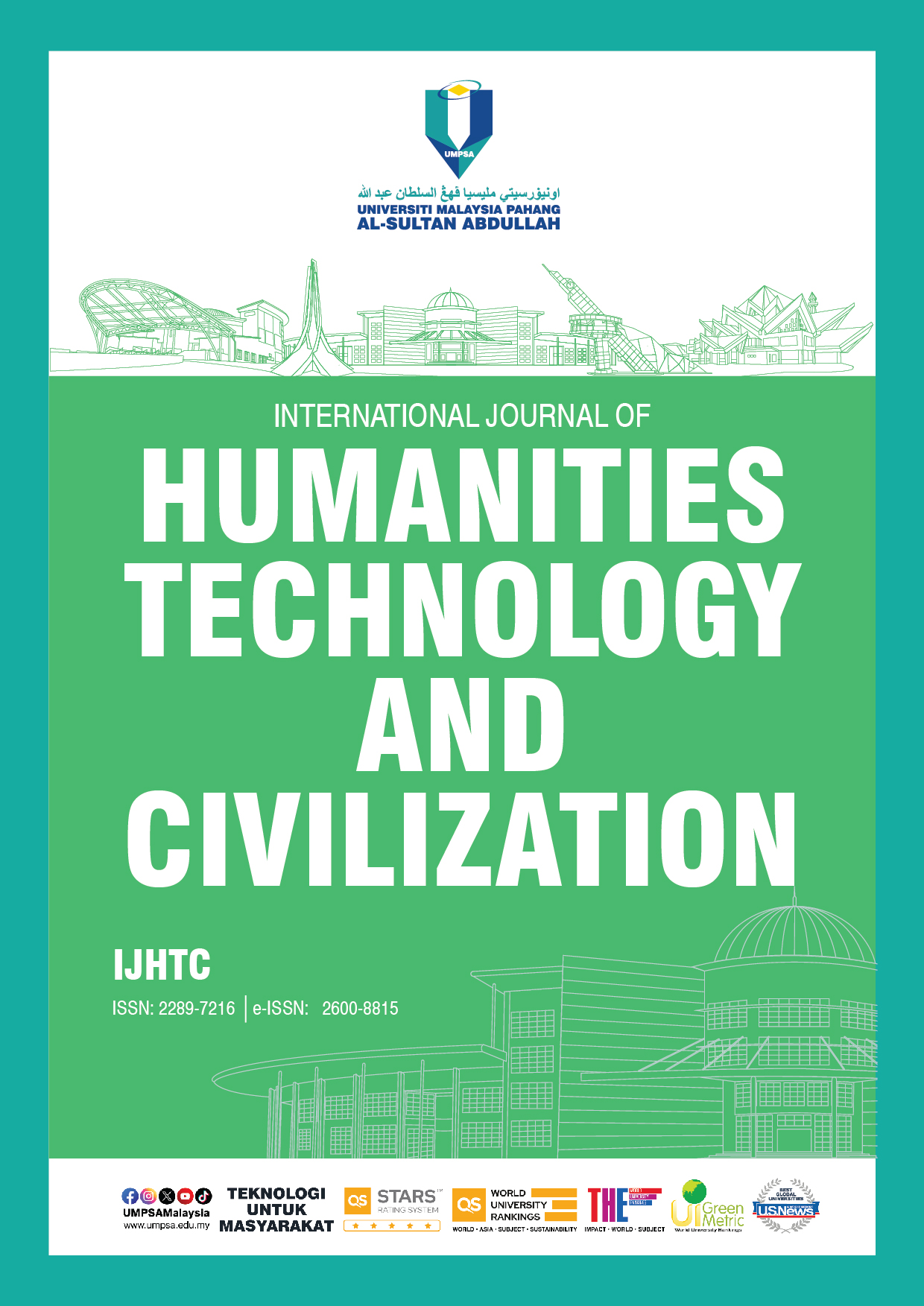EXPLORING THE MALAYSIAN CHINESE BUSINESS: A REVIEW
DOI:
https://doi.org/10.15282/ijhtc.v9i1.10673Keywords:
Chinese business, New economic policy, Business strategy, Business maneuver, BumiputeraAbstract
The paper will explore the momentum of the Chinese business in Malaysia into a consistent and competitive performance thereby making it possible to continue to lead the domestic business environment despite the many challenges before and after independence of Malaya. This paper employed the historical views conducted through literature content analysis. As a result, the study discovered that the business strategy used, particularly the maneuver capability factors in Chinese-owned companies before and after independence. Business maneuver methods were common strategies applied by the Chinese enterprises to increase the number of firm size during the period of the implementation of NEP era. The companies responded to the government’s call in opening up the ownership of shares for the Malay-Bumiputera investors without affecting their performance. Innovation to the preservation of Chinese-owned businesses in the era of NEP indicates that the companies practiced a partnership especially the small and medium enterprises and family businesses. Overall, it has proved that the dynamics of the company's business in the Chinese business based on the concept of maneuver allowed Chinese owned companies not only to survive, but to compete successfully and expand tremendously during the NEP era.
References
Agadjanian, Victor, dan Hui Peng Liew. (2005). “Preferential Policies and Ethnic Differences in Post‐Secondary Education in Peninsular Malaysia,” Race Ethnicity and Education. 8.2(2005): 213-230.
Chin Yee Whah. (2011). Crise Working Paper No. 73. Towards Inter-Ethnic Business Development and National Unity in Malaysia. Kajian Malaysia. 29(1): 141–176.
Creswell, J. W. (2012). Educational Research: Planning, Conducting, And Evaluating Quantitative and Qualitative Research (4th ed.). Boston, MA: Pearson,
Drabble, J. H. (1973). Rubber in Malaya, 1876-1922: The Genesis of the Industry. Kuala Lumpur: Oxford University Press.
Gomez, Edmund Terence, dan Hsin Hung Michel Hsiao (ed.). (2001). Chinese Business in South East Asia, Contesting Cultural, Explanations, Researching Entrepreneurship. United Kingdom: Curzon Press.
Gullick, J.M. (1951). Yap Ah Loy. Journal Malayan Branch Royal Asiatic Society. Vol. XXIV Part 2.
Hara, Fujio. (1991). Malaysia’s New Economic Policy and the Chinese Business Community. The Developing Economices. XXIX- (Dec. 1991). https://www.ide.go.jp/library/English/Publish/Periodicals/De/pdf/91_04_04.pdf
Hing, Lee Kam, Cheong Kee Cheok, dan Lee Poh Ping. (2013). Robert Kuok: Family, Dialect, and State in the Making of a Malaysian Magnate. Australian Economic History Review. 53(3): 268–91.
Hing, Lee Kam, dan Lee Poh Ping. (2003). Malaysian Chinese Business: Who Survived the Crisis. Kyoto Review of Southeast Asia. No.4, 2003.
Jackson, James C. (1968). Planters and Speculators: Chinese and European Enterprise in Malaya, 1786-1921, Kuala Lumpur: Oxford University Press.
Jesudason, James V. (1989). The State, Chinese Business and Multinationals in Malaysia. Singapore. Oxford University Press.
Jesudason, James V. (1997). Chinese Business and Ethnic Equilibrium in Malaysia. Development and Change. 28(1): 119–41.
Khoo Kay Kim. (1975). The Western Malay States, 1850-1873: The Effects of Commercial Development on Malay States, Kuala Lumpur: Oxford University Press.
Kok Loy Fatt. (1975). Ampang: Chinese Migrants and Tin Mining (1850-1914). Malaysia In History, 18(2). https://www.malaycivilization.com.my/items/show/129903
Koon, Heng Pek. (1997). The New Economic Policy and the Chinese Community in Peninsular Malaysia. The Developing Economies. (XXXV-3): 262-292. https://www.ide.go.jp/library/English/Publish/Periodicals/De/pdf/97_03_03.pdf
Lee Sheng Yi. (1990). The Monetary and Banking Development of Singapore and Malaysia. 3rd ed. Singapore. Singapore University Press.
Mosbah, A., dan Wahab, K. A. (2018). Chinese Family Business in Malaysia: Development, Culture and the Family Business Philosophy. International Journal of Academic Research in Business and Social Sciences. 8(5): 997–1006. DOI:10.6007/IJARBSS/v8-i5/4436
Nor Fuad Bin Abdul Hamid. (2013). Family Business Culture, Entrepreneurial Orientation and The New Economic Policy on Family Business Survival: A Study Between the Malays And Chinese Of Micro and Small-Sized Family Businesses in Malaysia. Doctor of Philosophy (Ph.D) The University of York. (unpublished)
Puthucheary, James J. (1960). Ownership and Control in Malayan Economy. Singapore. Eastern University Press.
Tan Ee Leong. (1961). The Chinese Banks Incorpoated in Singapore and The Federation of Malaya in T.H. Silcock (ed.). Readings in Malayan Economics. Singapore. Eastern Universities Press.
Tenth Malaysia Plan 2011-2015.
Trocki, Carl A. (1976). The Origins of the Kangchu System, 1740-1860. Journal of the Malayan Branch of the Royal Asiatic Society. 49(2): 132-155.
Weidenbaum, Murray dan Samuel Hughes. (1996). The Bamboo Network: How Expatriate Chinese Entrepreneurs Are Creating a New Economic Superpower in Asia. New York: The Free Press.
W.L. Blythe. (1947). Historical Sketch of Chinese Labour in Malaya. Journal Malayan Branch Royal Asiatic Society. Vol. XX(I): 64-114.
Downloads
Published
Issue
Section
License
Copyright (c) 2024 The Author(s)

This work is licensed under a Creative Commons Attribution-NonCommercial 4.0 International License.




